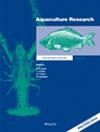Acute Thermal Sensitivity Varies Among Full Sibling Families of Atlantic Salmon
Abstract
Atlantic salmon production constitutes a growing industry in the United States and is largely reliant upon cage-culture in which fish are cultivated within enclosed nets or pens in environmental settings that are prone to natural variation. Temperature fluctuation in particular can substantially inhibit or accelerate production. Here we investigate the larval respiratory capacity (respiratory Q10) among pedigreed families of Atlantic salmon (Salmo salar) spawned in a hatchery facility exposed to acute thermal stress. Individual larvae from full-sibling families were incubated at three temperatures along a 10°C thermal gradient (6, 12, and 16°C) in calibrated respiration chambers and linear declines in oxygen content were used to determine individual respiration rates and family-based Q10. Metabolites from the tricarboxylic acid (TCA) pathway, a key pathway involved in cellular energy supply, were quantified in preserved whole tissue from each larval family using liquid chromatography tandem mass spectrometry (LC-MS/MS) to identify potential biochemical markers associated with thermal sensitivity. Clear family × environment interactions were observed, whereby some larval families exhibited negative rate-increases with warmer environments as opposed to others that exhibited enhanced respiration rates. Neither total metabolite content nor the abundance of single metabolite(s) were associated with family-specific trends in respiration rate with temperature. Our findings highlight the use for identifying contrasting phenotypes among pedigreed families of Atlantic salmon and their potential in selective breeding programs for tolerance to dynamic environmental conditions.


 求助内容:
求助内容: 应助结果提醒方式:
应助结果提醒方式:


